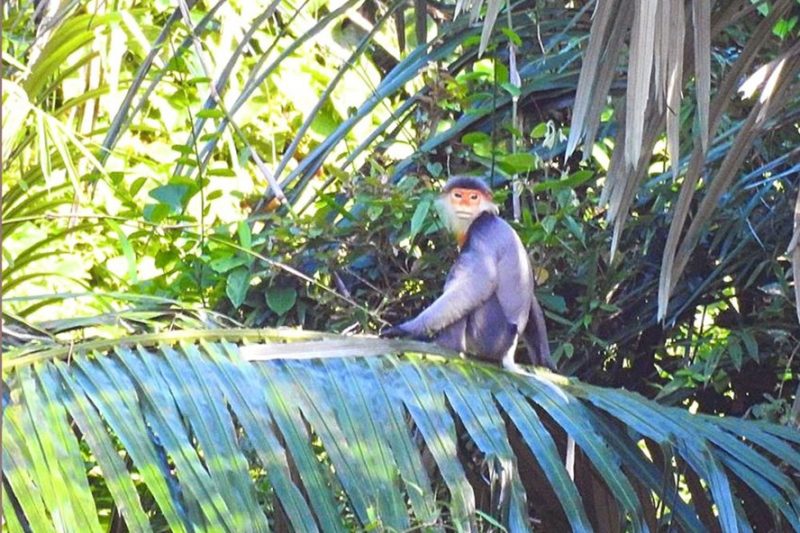|
Red-shanked doucs protected by locals
in Quang Nam forest
In 2017,
the news about the discovery of red-shanked doucs in Hon Do of Nui Thanh
district in Quang Nam province stirred the scientific community. The
provincial authorities immediately joined forces with Nuoc Viet Xanh
Biodiversity Conservation Center to conduct a tally.

The red shanked douc in Quang Nam
They
found two groups of red shanked doucs with a total of 16-20. However, the
precious primates, which are seen only in Vietnam, now live in an isolated
natural forest covering an area of 5 hectares.
This prompted some scientists to think of moving herds to ensure habitat and food for the langurs. Surprisingly, the idea faced strong opposition from both local authorities and people. “The scientists have recently heard about the doucs, but we have been familiar with them for many years. We consider them as children,” said Danh, a local man who works as a volunteer in the team of douc protectors. “They are our treasure. They are even more valuable than gold,” he said. Pham Minh Huan, a forest ranger in Nui Thanh district, reassured reporters that they would be able to see the doucs. “They always ‘sun bathe’ on trees every morning. They leave at 8 am to avoid the sunlight and return in the afternoon,” he explained.
Huan
introduced every member of the team of douc protectors to reporters. They
earn their living with different jobs, from fowl farming to honey bee
collectors, but they all want to protect the doucs like their children.
“We go to the forest regularly to see if there is any trap or illegal poacher, and to be sure that the doucs are safe,” Danh, a member of the team, said. The reporters had the chance to see the doucs and take pictures of them. The reporters got up very early at dawn and depart from the Hon Do forest rangers’ station. “Look over there,” Danh said, pointing his hands to some trees. The doucs appeared at dawn. Some of them sat still on the trees, while others passed from one branch to another. Danh said the doucs there like eating sprouts. They eat leaves more than fruits and move on trees faster than on the ground. “They are so nice. They are vegetarians,” he said. There are still no official statistics about the number of doucs in Hon Do. Some people say there are three groups of 70. Tran Huu Vy, director of Nuoc Viet Xanh Biodiversity Conservation Center, affirmed that the locals are capable of protecting doucs in Nui Thanh.
VNN
|
Thứ Sáu, 11 tháng 5, 2018
Đăng ký:
Đăng Nhận xét (Atom)
Không có nhận xét nào:
Đăng nhận xét